Ozempic® (semaglutide) Injection
$199.99 – $480.00
Ozempic works similarly to a hormone called glucagon-like peptide-1 (GLP-1), which naturally helps the body control blood sugar and insulin levels.
It binds to GLP-1 receptors and stimulates the pancreas to release insulin. Ozempic also reduces the amount of sugar your liver releases and prevents blood sugar increases.
It’s most effective when combined with a healthy diet and routine exercise.
Buy Ozempic® (semaglutide) Injection Online
Description
Buy Ozempic Online Canada. Ozempic (semaglutide) is a prescription medication that the FDA approved for patient use in 2017. It’s in a class of drugs known as glucagon-like peptide-1 agonists, and it’s used to improve blood sugar levels in adults who have type 2 diabetes mellitus (DM). Buy Ozempic Online Canada
Ozempic is typically used when other drugs, such as metformin and insulin, aren’t effectively managing a person’s type 2 diabetes. Buy Ozempic Online Canada. By controlling blood sugar, Ozempic may also reduce the risk of heart attack or stroke in people with type 2 diabetes and heart disease.
Currently, there is no generic alternative to Ozempic.
How does Ozempic work?
Ozempic works similarly to a hormone called glucagon-like peptide-1 (GLP-1), which naturally helps the body control blood sugar and insulin levels.
It binds to GLP-1 receptors and stimulates the pancreas to release insulin. Ozempic also reduces the amount of sugar your liver releases and prevents blood sugar increases.
It’s most effective when combined with a healthy diet and routine exercise.
Who is eligible?
Your healthcare provider can help you determine if you are a candidate for Ozempic. If you’re an adult who’s been diagnosed with type 2 diabetes mellitus, you may be eligible to take this drug. Typically, doctors prescribe Ozempic for patients who have tried medications like metformin without success.
Ozempic can be taken in addition to other medications for type 2 DM. It’s not approved for treating type 1 diabetes mellitus, or for treating patients younger than 18 years old. While Ozempic may lead to weight loss by controlling blood sugar and reducing appetite, it’s currently not approved for treating obesity.
Ozempic isn’t appropriate for people who have a personal or family history of a type of thyroid cancer called medullary thyroid carcinoma.
Is Ozempic FDA approved?
Ozempic received approval from the Food and Drug Administration (FDA) for treating type 2 diabetes mellitus in 2017. The FDA approval is based on seven clinical trials of more than 4000 patients with type 2 DM.
Is Ozempic effective?
Clinical trials have shown Ozempic to be effective in lowering a person’s hemoglobin A1c (HbA1c), a measurement of blood sugar control.
You may not notice the effects of Ozempic immediately. It may take up to eight weeks or longer for Ozempic to take full effect, because it’s a long-acting drug you only take once per week.
That said, everyone is different. If you’re concerned about your blood sugar levels after taking Ozempic for eight weeks or more, speak to your prescriber.
Ozempic is most effective at lowering blood sugar levels when combined with healthy lifestyle practices like exercise and healthy diet.
What to avoid with Ozempic
Be sure to follow your doctor’s instructions when you take Ozempic to ensure its safety and effectiveness.
While some patients take other diabetes medications with Ozempic, don’t take other kinds of semaglutide if you take Ozempic.
Never reuse a needle from an Ozempic injection. Don’t share your injection pen with anyone else (even if you changed the needle).
Ozempic is not approved for use during pregnancy. If you plan to get pregnant, tell your doctor right away so you can find another medication for controlling your diabetes. It’s best to stop taking Ozempic two months before you try to get pregnant.
Avoid drinking excessive amounts of alcohol if you take Ozempic. Alcohol can disrupt your blood sugar levels and heighten your risk of hypoglycemia, or low blood sugar.
Side effects
As with any medication, Ozempic may cause unwanted side effects. Some of the most common side effects of Ozempic are:
- Low blood sugar
- Nausea and vomiting
- Loss of appetite
- Upset stomach
- Heartburn
- Gas
- Diarrhea
- Bloating
- Headache
- Dizziness
- Fatigue
Rarely, Ozempic may cause more serious side effects. Seek immediate medical care if you take Ozempic and experience any of the following:
- Signs of an allergic reaction, such as swelling, hives, rash, or difficulty breathing
- Vision changes
- Thoughts of self-harm or suicide
- Feeling like you might pass out
- Signs of pancreatitis, such as severe pain in your upper stomach, nausea, and fast heart rate
- Signs of a thyroid tumor, such as swelling or a mass in your neck, shortness of breath, or trouble swallowing
- Signs of gallbladder problems, such as pain in your upper stomach, clay-colored bowel movements, or yellow skin and eyes
Dosages
Ozempic is a liquid medication that comes as a pen you use to self-inject in your skin once a week at any time of day.
It’s usually prescribed at .25 mg once weekly for four weeks to thirty days. After this time passes, you may take 0.5 mg once weekly for four weeks.
If this dosage properly controls your blood sugar levels, you may continue at the same dose. If not, your prescriber may recommend increasing to 1 or 2 mg once weekly.
The maximum dosage of Ozempic is 2 mg once weekly.
Always follow your doctor and pharmacist’s instructions when taking Ozempic.
Interactions
Ozempic may negatively interact with other drugs. Because Ozempic can slow down the digestive process, it may take your body longer to absorb other medicines.
Before taking Ozempic, tell your prescriber if you take any of the following medications for diabetes:
- Insulin degludec (Tresiba)
- Insulin detemir (Levemir)
- Insulin glargine (Lantus, Toujeo)
- Glimepiride (Amaryl)
- Glipizide (Glucotrol)
- Glyburide (Diabeta, Glynase Prestabs)
This is not a complete list of possible drug interactions with Ozempic. Other medications can increase the likelihood of low blood sugar when you take Ozempic or cause other unwanted side effects.
If you want to take Ozempic, your healthcare provider can help you determine whether you’d benefit from it and if any of your current medications are unsafe while taking Ozempic.
| Options | 1 prefilled 0.25mg/0.5mL-2mg/1.5mL, 1 prefilled 1 mg-4mg/3mL, 2 prefilled 0.25mg/0.5mL-2mg/1.5mL, 2 prefilled 1mg-4mg/3mL |
|---|
Be the first to review “Ozempic® (semaglutide) Injection” Cancel reply
Related products
Weight Loss Meds
Weight Loss Meds
Weight Loss Meds
Wegovy For Weight Loss
Wegovy® (semaglutide) injection (Wegovy Weight Loss Injection)
Best Weight Loss Medication
Weight Loss Meds



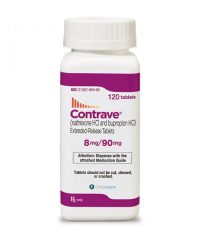
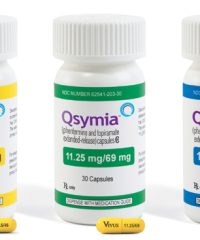
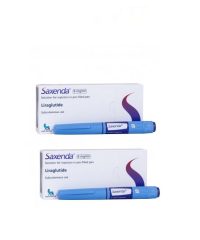
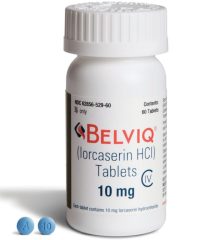
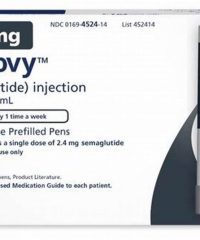



Reviews
There are no reviews yet.